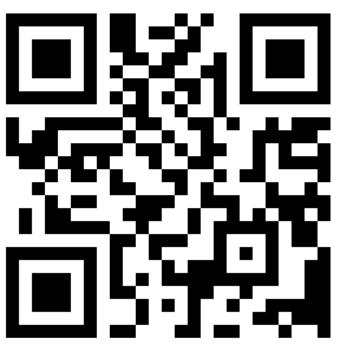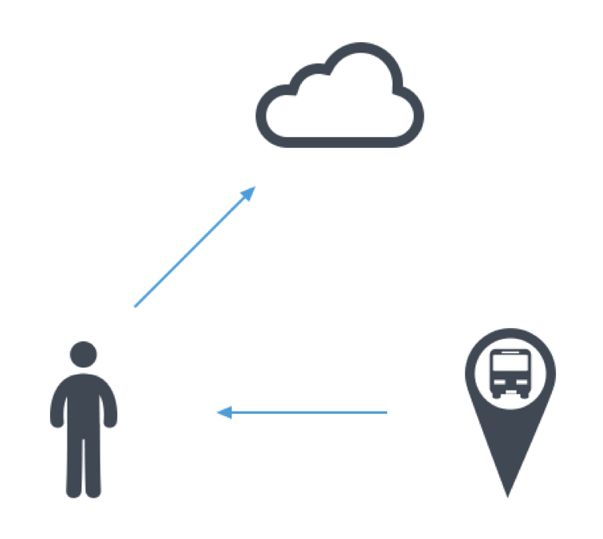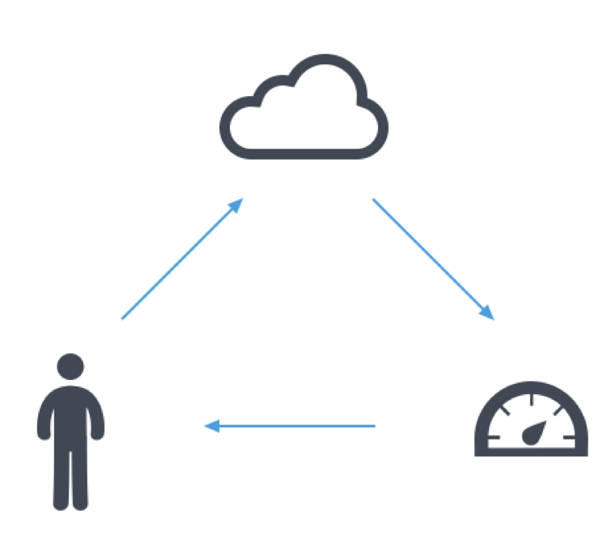Eddystone and Physical Web: Beacon Evolution

My name is Alex, I'm an Android developer at Touch Instinct. Recently, Google invited me to the jury at the BaumanHack hackathon. I have prepared a report on the specifics of Eddystone and Physical Web, sharing the main points.
iBeacon
It all started with Apple and iBeacon lighthouses, announced in 2013. Beacons (eng. Beacons) are devices that support Bluetooth Low Energy technology. Their task is very simple - periodically send a data packet (advertisement packet).
We are interested in the following parts of this package:
')
- The identifier of the lighthouse, which consists of three parts:
- UUID - 16 bytes, it can be your company ID, chain stores, etc.
- Major - 2 bytes, ID of the city where your network is located
- Minor - 2 bytes, for example, the coordinates of a particular store
- TX Power - 1 byte, reference signal strength. It represents the signal strength at a distance of one meter from the lighthouse. Measured in dBm. You can determine the distance from the beacon to the phone by this value using trilateration, for example.
You can specify any UUID, major and minor value. For example, UUID is a shopping center, major - a shop in a shopping center, minor - a department in a shop. More details about the iBeacon Bluetooth profile can be found here .
Disadvantages of iBeacon beacons:
- Need to install the application
- Support only on iOS (Android - only when using third-party libraries, for example, Android beacon library)
Eddystone
In July of this year, Google announced its own open beacon format. For developers, the plus is that the technology is compatible with both Android and iOS.
And Google came up with sending three packages instead of one:
- Eddystone-uid . This is the same identifier - analogue of iBeacon (UUID, major, minor). It consists of 2 parts: Namespace ID (10 bytes), Instance ID (6 bytes).
- Eddystone URLs. Now beacons broadcast URLs up to 18 bytes. The problem of long URLs will help us solve URL shorteners. For example, a service from the same Google goo.gl. From this address touchin.ru/portfolio/squawk you can get a short version of goo.gl/PidTf3 . This is a major innovation, a little later I will explain why.
- Eddystone-TLM (Telemetry) . The following beacon data is available:
- charge level
- the number of packets sent since connecting to the power supply
- lighthouse activity time since connecting to power supply
- temperature
Here you can read the specification.
Common disadvantages of lighthouses:
- The signal transmission distance is up to 50 meters in an open field. Indoors - less, as the walls affect the propagation of the signal.
- The user must constantly keep Bluetooth low energy enabled on the smartphone, since he consumes very little energy.
- One of the manufacturers of beacons Estimote declares that the battery has been operating for three years with default settings. It is necessary to periodically monitor the beacons for the presence of nonworking ones, which can be a problem with a huge park of beacons.
Physical web
Why is the new type of package - Eddystone-URL so important? Because now it is the engine of Physical Web. To understand what problem the Physical Web is trying to solve, let's recall the QR code.

It was the first attempt to connect the Web and the real world, and it even partially succeeded.
Let's consider this situation. We are walking through an unfamiliar area and want to know what is interesting is nearby. Even if the QR code is located within walking distance, it is difficult to find. Sometimes it is physically impossible to see (for example, it is around the corner). Well, if you see, you need to approach it, open a pre-installed application, direct it, get a URL (in most cases) and follow the link.
Too many gestures. We are lazy.
What offers us PhysicalWeb - interaction on demand.

There is an application PhysicalWeb. With it, you can see all the URLs around you. You just need to get the phone out of your pocket and see what is nearby. In the store opposite the New Year's sale, the musician in the transition has a website, a car near you is sold, and around the corner an apartment is rented. Lots of information on request.
Here is a good video to dive into the topic.
For all this to come into our lives, the application must be part of not only Android, but also other mobile operating systems.
Consider scenarios of interaction with the Physical Web and examples of use in real life.
Classic Web

Imagine that you are standing at a bus stop and do not know either the timetable or the number of the desired bus. Save the situation can applications about transport, but it is not supported in all cities. But at the stop, you can hide the beacon, which translates the URL with the necessary information.
Cloud Passthrough

Suppose you drive up to a gas station. Usually you go to the gas station, stand in line, pay and refuel. Here you can also apply Physical Web. Gas station transmits the URL where you can set the required number of liters and pay for gasoline on the same page. After that, the server will connect to the column via sockets and the refueling process will begin. There is a similar parking payment scenario:
Web Bluetooth
In the video, you see a bug, with which you can interact directly using the JavaScript Bluetooth API. This is an open standard that is still in development.
Conclusion
Physical Web looks pretty promising, so turn on Bluetooth and make this world a bit more interactive.
All with the coming NG!
Source: https://habr.com/ru/post/274585/
All Articles